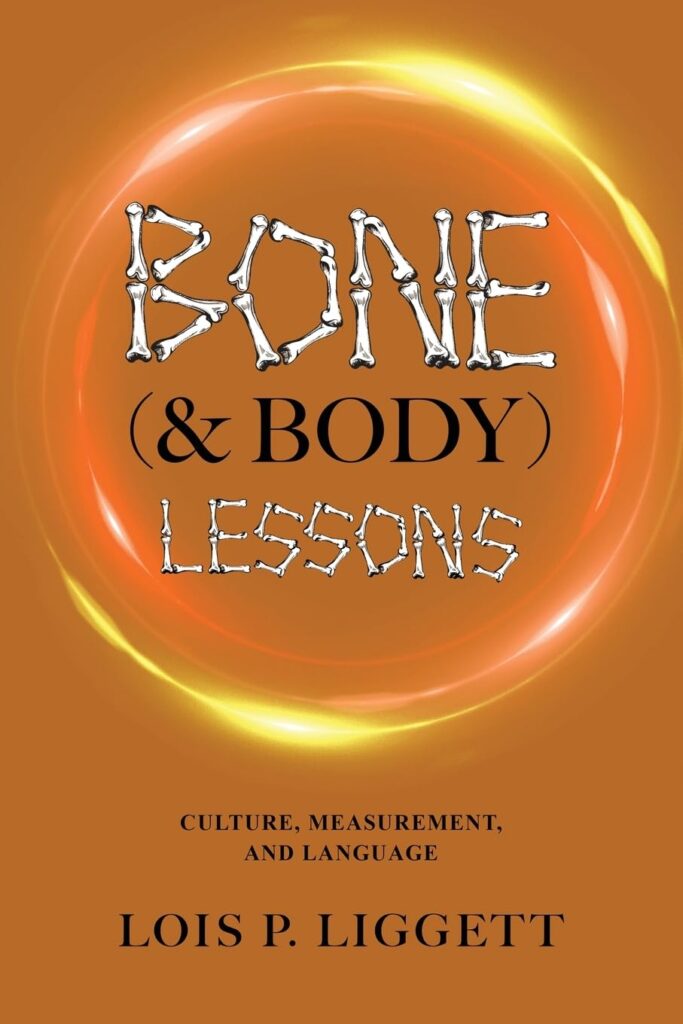

Lois Liggett is a retired physical therapist and a world traveler. She worked in Japan in 1990 as a geriatric rehabilitation consultant. She has an M.A. in gerontology and a B.S. in physical therapy from Russell Sage College. She has an avid interest in the interface of language with mythology, religion, and spirituality. She developed a method she calls “spiritual linguistics” to find common and essential meanings of a nomenclature using word roots and definitions. Her first book, Decoding Norse Myths with Pet Ravens, published by Mindstir Media, LLC in 2021, reflects this linguistic method, as does this book, Bone (& Body) Lessons.
Rooted in the universal ideal to “know thyself” shared by philosophies and religions around the world, this intersection of language physiology provides fascinating insight into the way people think, live, and interact with one another. Through this knowledge, readers can reimagine the words they use, what they truly mean, and how they affect the lives they live. The book is a transformative, captivating read that sheds light on a powerful framework present in every aspect of humanity.
One way to understand self is through the skeletal frame. Skeletal bones hold many secrets which can be unlocked to tell stories of humankind; they become lessons for life.
This book provides four perspectives on bone: culture, measurement of bones and body postures, grammar, and bone names. Word roots and definitions related to bone vocabulary allow the reader to gain insight. A major theme is to know oneself-to develop self-awareness. What can a person learn about self from bones?
This book accompanies each person on their quest to know themselves, whether or not on a conscious or subconscious level. The current popularity of DNA kits that are being sold today-as well as the many websites offering assistance to people delving into their ancestry-validate this.
Whether it is to delve into possible hereditary health conditions or to locate relatives and forge a connectedness to others in the world around them, people want to learn more about themselves. Bones provide such framework, for body and self.
Norse mythology has intrigued mythologists, linguists, and runologists for many decades. This intrigue lies in the mysteries that lurk in these myths.
These mysteries include the lack of archeological finds prior to the Viking Age, (late 700s A.D. to 1100), the absence of authentic celebratory rituals paying homage to the Norse gods and goddesses, and an absence of a thorough explanation of the meaning of the names of the Norse gods and goddesses.
This book sheds light on these mysterious elements, especially the meaning hiding beneath the names and places in Nordic myth. This commentary is a lexicon focused on etymology and semantics designed to allow the reader to gain insight into these myths. Definitions linked to names of gods and goddesses and words found in the Norse myths become a lexicon referring to the vocabulary of a particular people, a language, and a branch of knowledge, that have application both in the present and the ancient past.
I let the words journey me across the boundaries of time, culture, and academia. Follow the common threads of various languages related to similar words to discover the essential meanings. The written versions of Nordic myths and sagas from the oral tradition occurred in the 13th century by a small number of people. It seems to me that there is a margin of error in misinterpretation of sounds and images of these oral traditions when committed to written documents. This margin of error is part of the intrigue and mystery. The Norse myths may have been 100s, if not 1,000s of years old when Snorri Sturluson committed them to paper in the early 13th century.